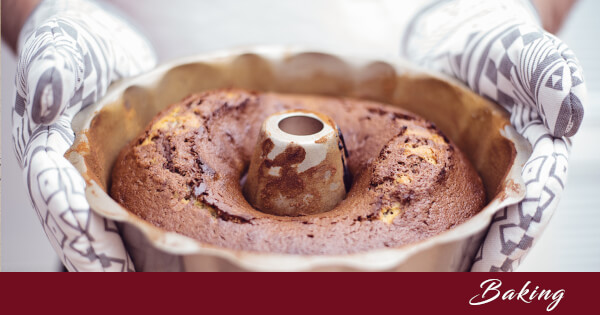Food Names
What Thanksgiving leftovers are you now enjoying? Turkey? Green bean casserole? Sweet potatoes? Pecan pie? The names of these foods make sense. They tell you exactly what you’re eating. Other dishes have names that not only don’t provide a clue as to what they are but make you scratch your head and wonder how they received their moniker.
Chess Pie
A few days ago, I made a chess pie. It’s an old and simple Southern dessert, convenient rather than extravagant because the basic ingredients—butter, sugar, eggs, flour, and cornmeal—are all household staples. I’ve eaten it all my life, but until the other day, I’d never considered why it’s called “chess” pie.
Turns out there is no definitive answer, but there are several good possible explanations. Here are three:
Accent. One legend claims a Southern cook was asked what she was cooking that smelled so good. Her reply: “It’s jes’ pie.” That jes’ (just) sounded like chess, and the name stuck.
Storage. Unlike other pies, Chess pies could easily be stored in the “pie chest.” It’s believed “chest” pie eventually became “chess” pie.
Location Eaten. After dinner, Southern gentlemen played chess while enjoying dessert, thus, this popular pie eventually became known as “chess” pie.
Did You Know…
- The first printed Chess Pie recipe is found in Martha Washington’s Booke of Cookery from the mid-1700s.
- In the past, a freestanding piece of furniture—called a pie safe or pie chest—kept foods, especially pies, safe from rats and mice.
Stargazy Pie
This “pie” comes with a legend. One year, back in sixteenth-century Cornwall (England), everyone in the small town of Mousehole was starving. Fierce winter storms had kept the fishing fleet in the harbor, cutting off the villagers’ main source of food—fish.
All looked hopeless. Then, on December 23, one local fisherman, Tom Bawcock, braved the weather and wild seas. His effort netted enough fish for the entire village, and his catch was baked into one giant “pie.” Not a sweet pie, but a whole-fish and potato creation in a pastry crust. To prove it contained fish, the villagers arranged the fish so their heads poked out of the crust to gaze up at the sky.
Did You Know…
- The position of the fish in Stargazy Pie is to allow the oil released during cooking to drain into the pie. This ensures the pie is moist and full of flavor.
- Every December 23, the village of Mousehole celebrates Tom Bawcock’s Eve festival.
- Traditionally, Stargazy Pie is filled with whole Pilchards. (Pilchards are sardines, but not the small, canned ones found in your local grocery store.)
Bubble and Squeak
In the 1700s, Bubble and Squeak was made with Sunday dinner leftovers—usually boiled beef and cabbage. Food shortages during World War II led to potatoes replacing the meat. Today, it is usually made with mashed potatoes and various vegetables leftover from Sunday’s roast dinner.
Bubble and Squeak can be cooked as individual, burger-sized patties, one large pan-patty, or stirred around loose. It can have a fried egg on top or include bacon or other leftover meat. It can be eaten as a main meal or as a side dish for a meat dinner. It has one purpose—use up leftovers—and only one hard-and-fast rule—include mashed potatoes to hold it together. (Click here for a Bubble and Squeak recipe.)
Did You Know…
- The name Bubble and Squeak comes from the way the vegetables’ liquid bubbles and squeaks as it fries in the pan.
- Bubble and Squeak is typically eaten on Mondays.
Food for Thought
There are many dishes with interesting and often perplexing names. The ones I’ve listed here barely scratch the surface. Think about the foods you eat. How many of them have names that make no sense?
Did You Know…
- There are no grasshoppers in Grasshopper Pie. It takes its name from the grasshopper cocktail created in New Orleans and popular in the South during the 1950s and 1960s.
- Headcheese is not cheese. Rather it’s a jellied and compressed loaf made from a pig’s head, feet, and often heart and tongue. (Sounds tasty, doesn’t it?)
- Rocky Mountain Oysters aren’t oysters at all, but the testicles of various animals (sheep, bull calf, or mountain goat) found in the Rockies.
- Sweetbreads aren’t sweet or bread. They are the thymus or pancreas glands of young calves or lambs. Back in the sixteenth century, “bread” meant roasted or grilled meat. And “sweet” was used to differentiate this tender meat with other tougher cuts of meat.
- “Beaver Tail” is Canada’s unique take on the donut. (The name comes from the shape of the pastry and not because it contains any part of a beaver.) A ball of dough is stretched and flattened then deep-fried until crispy and golden brown. It’s typically served hot and topped with anything from cinnamon sugar and chocolate to lox, bacon, and cheese.
- Cat’s Tongues are thin, crispy cookies with a delicate, meringue-like texture. The name probably came from the fact the cookie—like a cat’s tongue—is long and flat with pointed ends.

